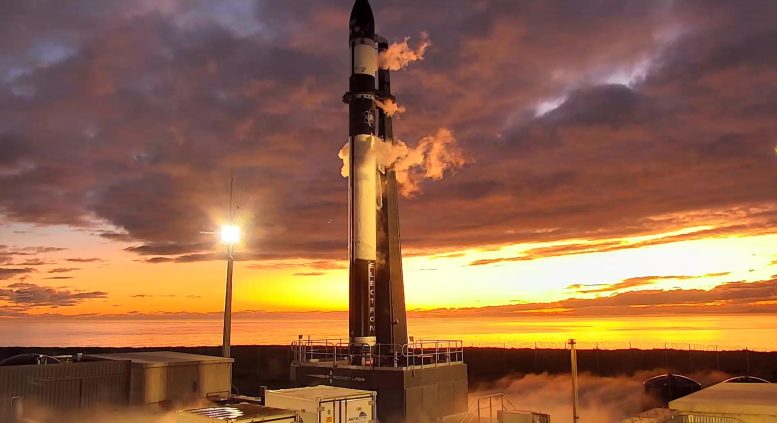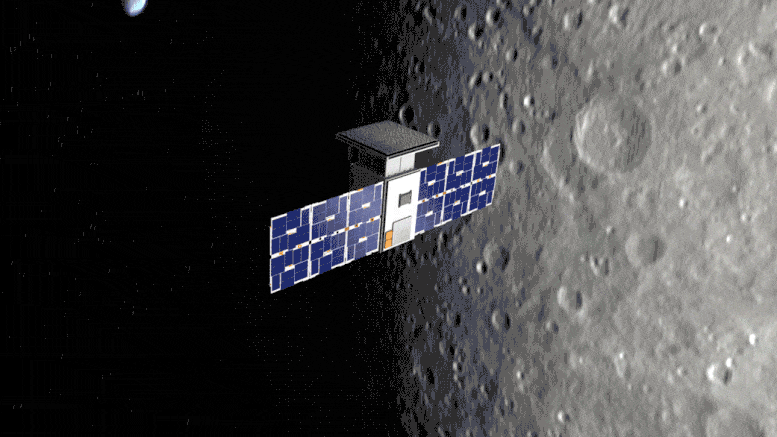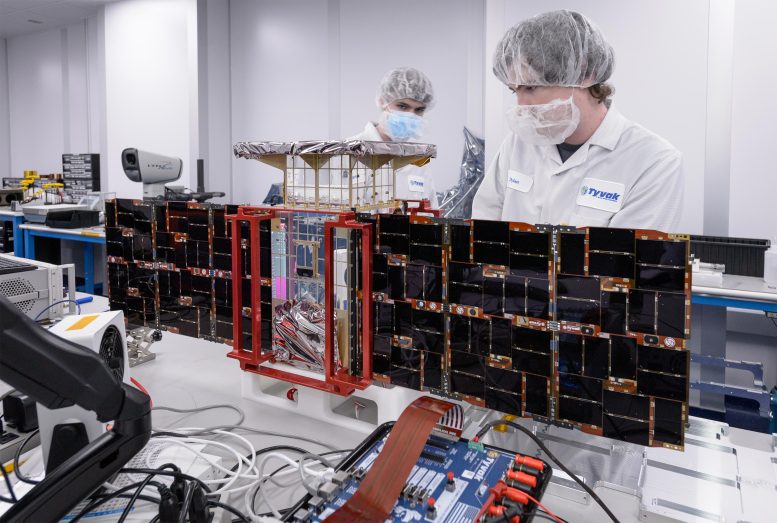
Rocket Lab’s Electron rocket sits on the pad at the company’s Launch Complex 1 in New Zealand for wet dress rehearsal ahead of the CAPSTONE launch. Credit: Rocket Lab
NASA, Rocket Lab, and Advanced Space are standing down from the June 27 launch attempt for the CAPSTONE mission to the Moon to allow Rocket Lab to perform final systems checks. The mission was slated to launch on Monday, June 27, aboard a Rocket Lab Electron rocket from the company’s Launch Complex 1 in Mahia, New Zealand.
Teams are evaluating weather and other factors to determine the date of the next launch attempt. The next launch opportunity within the current period is on June 28. CAPSTONE’s trajectory design means that the spacecraft will arrive at its lunar orbit on November 13 regardless of launch date within the current period, which offers launch opportunities every day through July 27.

Rocket Lab’s Photon satellite bus will deliver CAPSTONE into a trajectory toward the Moon. Credit: Illustration by NASA/Daniel Rutter
CAPSTONE, which stands for Cislunar Autonomous Positioning System Technology Operations and Navigation Experiment, will be the first spacecraft to fly a specific unique lunar orbit ahead of future missions with crew.
The destination for this microwave oven-size CubeSat is a near rectilinear halo orbit (NRHO). That same orbit is planned for Gateway, a multipurpose outpost for long-term lunar missions as part of the agency’s Artemis program.

Team members install solar panels onto the CAPSTONE spacecraft – short for Cislunar Autonomous Positioning System Technology Operations and Navigation Experiment – at Tyvak Nano-Satellite Systems Inc., in Irvine, California. Credit: NASA/Dominic Hart
Six days after launch, the Photon upper stage will release CAPSTONE into space for the first portion of the spacecraft’s solo flight. After a four-month journey to the Moon, CAPSTONE will test the dynamics of the NRHO for at least six months, helping reduce risk for future spacecraft. CAPSTONE will also demonstrate innovative spacecraft-to-spacecraft navigation technology and one-way ranging capabilities that could help future spacecraft fly near the Moon with reduced need for communication with Earth.
CAPSTONE is commercially owned and operated by Advanced Space in Westminster, Colorado, on behalf of NASA. It represents an innovative collaboration between NASA and industry to provide rapid results and feedback to inform future exploration and science missions. Tyvak Nano-Satellite Systems, a Terran Orbital Corporation, of Irvine, California, built the spacecraft. The mission also includes contributions from Stellar Exploration Inc., Space Dynamics Lab, Tethers Unlimited Inc., and Orion Space Systems.
https://news.google.com/__i/rss/rd/articles/CBMicmh0dHBzOi8vc2NpdGVjaGRhaWx5LmNvbS9uYXNhcy1jYXBzdG9uZS1sYXVuY2gtdG8tbW9vbi1kZWxheWVkLXNwYWNlY3JhZnQtd2lsbC1iZS1maXJzdC10by1mbHktdW5pcXVlLWx1bmFyLW9yYml0L9IBdmh0dHBzOi8vc2NpdGVjaGRhaWx5LmNvbS9uYXNhcy1jYXBzdG9uZS1sYXVuY2gtdG8tbW9vbi1kZWxheWVkLXNwYWNlY3JhZnQtd2lsbC1iZS1maXJzdC10by1mbHktdW5pcXVlLWx1bmFyLW9yYml0L2FtcC8?oc=5
2022-06-27 08:41:02Z
1482777447
Tidak ada komentar:
Posting Komentar